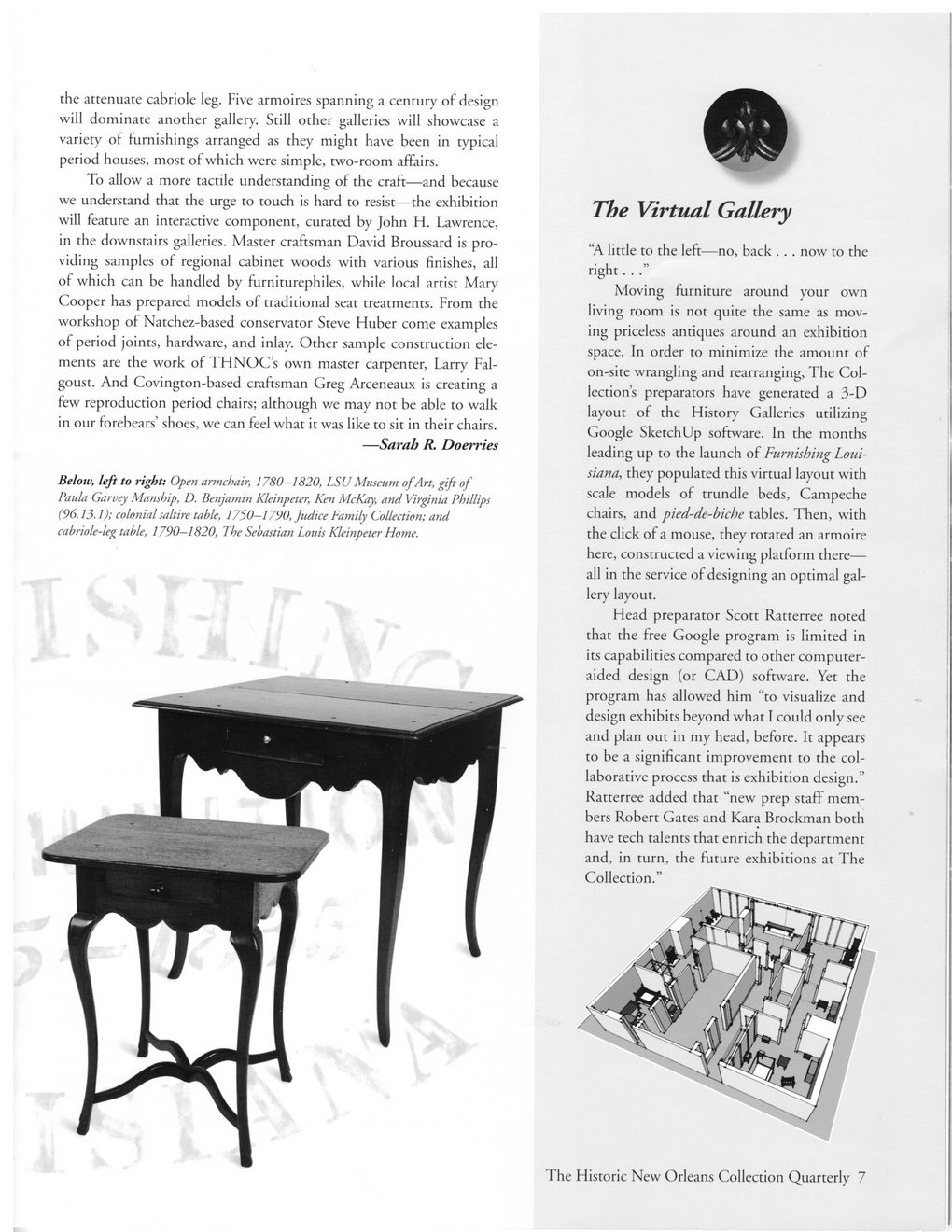This text was obtained via automated optical character recognition.
It has not been edited and may therefore contain several errors.
the attenuate cabriole leg. Five armoires spanning a century of design will dominate another gallery. Still other galleries will showcase a variety of furnishings arranged as they might have been in typical period houses, most of which were simple, two-room affairs. To allow a more tactile understanding of the craft—and because we understand that the urge to touch is hard to resist—the exhibition will feature an interactive component, curated by John H. Lawrence, in the downstairs galleries. Master craftsman David Broussard is providing samples of regional cabinet woods with various finishes, all of which can be handled by furniturephiles, while local artist Mary Cooper has prepared models of traditional seat treatments. From the workshop of Natchez-based conservator Steve Huber come examples of period joints, hardware, and inlay. Other sample construction elements are the work ofTHNOC’s own master carpenter, Larry Fal-goust. And Covington-based craftsman Greg Arceneaux is creating a few reproduction period chairs; although we may not be able to walk in our forebears’ shoes, we can feel what it was like to sit in their chairs. —Sarah R. Doerries Below, left to right: Open armchair, 1780-1820, LSU Museum of Art, gift of Paula Garvey Manship, D. Benjamin Kleinpeter, Ken McKay, and Virginia Phillips (96.13.1); colonial saltire table, 1750-1790, Judice Family Collection; and cabriole-leg table, 1790-1820, The Sebastian Louis Kleinpeter Home. The Virtual Gallery “A little to the left—no, back . . . now to the right...” Moving furniture around your own living room is not quite the same as moving priceless antiques around an exhibition space. In order to minimize the amount of on-site wrangling and rearranging, The Collection’s preparators have generated a 3-D layout of the History Galleries utilizing Google SketchUp software. In the months leading up to the launch of Furnishing Louisiana, they populated this virtual layout with scale models of trundle beds, Campeche chairs, and pied-de-biche tables. Then, with the click of a mouse, they rotated an armoire here, constructed a viewing platform there— all in the service of designing an optimal gallery layout. Head preparator Scott Ratterree noted that the free Google program is limited in its capabilities compared to other computer-aided design (or CAD) software. Yet the program has allowed him “to visualize and design exhibits beyond what I could only see and plan out in my head, before. It appears to be a significant improvement to the collaborative process that is exhibition design.” Ratterree added that “new prep staff members Robert Gates and Kara Brockman both have tech talents that enrich the department and, in turn, the future exhibitions at The Collection.” The Historic New Orleans Collection Quarterly 7

New Orleans Quarterly 2012 Winter (07)